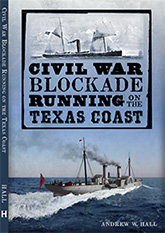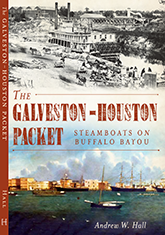Sucks to Be You, Lieutenant
 Pity poor Brevet Lieutenant F. G. Ravenel, Aide-de-Camp to Brigadier General Roswell S. Ripley (right, 1823-87), the officer in charge of the Confederate defenses at Charleston. Ravenel had to start an otherwise routine Tuesday morning by writing this memorandum to his boss:
Pity poor Brevet Lieutenant F. G. Ravenel, Aide-de-Camp to Brigadier General Roswell S. Ripley (right, 1823-87), the officer in charge of the Confederate defenses at Charleston. Ravenel had to start an otherwise routine Tuesday morning by writing this memorandum to his boss:
HDQRS. SECOND MILITARY DIST. OF SOUTH CAROLINA,
Charleston, S. C., May 13, 1862. GENERAL: I have to report that the steamer Planter was stolen from Southern Wharf at between 3 and 3.30 o’clock this morning and taken to the enemy’s fleet, off the bar, where she was visible till late in the forenoon. By telegram from Stono this afternoon it is reported that she has gone south. The Planter is a high pressure, light-draft boat, drawing ordinarily not more than 3½ to 4 feet, and has been employed in the Confederate service in the transportation of ordnance, etc., to and from the various posts in the harbor and other localities in the neighborhood. She was under the command of C. J. Relyea as master, Samuel H. Smith, a Charleston pilot, being mate, and Zerich Pitcher, engineer, with a colored crew, eight in number, and all slaves. Neither the captain, mate, nor engineer were on board at the time of her departure, notwithstanding Paragraph VIII, in Orders No. 5, viz: All light-draft steamers in the employ of the Government will be in readiness to move at once, their officers and crews, when at the wharf, remaining on board day and night. Four of her colored crew and one of the colored crew of the steamer Etowah are missing, and are supposed to be parties to the theft. The Planter was to have taken to the Middle Ground battery early this morning a portion of the armament for that fortification, which had been put on board yesterday afternoon, viz, a banded rifle 42, one VIII-inch columbiad, one VIII-inch seacoast howitzer, and one 32-pounder. She had also mounted for her own use one 32-pounder and a 24-pounder howitzer, and for use in Fort Sumter a X-inch columbiad carriage, all of which have fallen into the hands of the enemy. From an examination of the guard in the neighborhood of the wharf whence the Planter was stolen, it would appear that about 8 o’clock last night two white men and a white woman went on board of her, and as they were not seen to return it is supposed that they have also gone in her. The sentinel on post about 50 yards from where the Planter was moored noticed her movement from the wharf at between 3 and 3.30 o’clock, but did not think it necessary to stop her, presuming that she was but pursuing her usual business. The Planter, after leaving the wharf, proceeded along the bay as far, perhaps, as the Atlantic Wharf, where, after a short stoppage and the blowing of her whistle, she was turned and proceeded on her course to sea. She passed Fort Sumter at 4.15 o’clock and was reported by the sentinel on duty to the officer of the day. She was supposed to be the guard boat and allowed to pass without interruption.
![]()
This is going to ruin the general’s whole damn day when he reads this, especially since the new battery where those guns were to be taken, on the Middle Ground bar in Charleston Harbor, is going to be named after the general. There are laws against mistreating animals, but not so much ADCs. 😉
_________________






Andy, you made my day.
TR
I got a sharp, please-don’t-shoot-the-messenger vibe when I read the memo.
Really makes you want to see some the preliminary drafts of this report, doesn’t it.
>>By telegram from Stono this afternoon it is reported that she has gone south. <<
Andy, You have to appreciate the irony (in addition to the interesting use of the term "gone south") that the telegram came from Stono, which gave its name to the largest and most nearly successful slave revolt in US history in 1739 To add to the wonderful complexities of history and as a slap in the face to antebellum pro-slavery advocates and modern slave state apologists who say that at least US slavery brought kidnapped Africans the benefits of Christianity and the Western world, the Stone Rebellion was believed to be led by slaves born and raised in the Kongo/Angola areas who, as such, were Roman Catholic speakers of Portuguese who were trained soldiers in their native land(s).
In this case, the fact that white Southerners consistently underestimated the capabilities, especially intellectual, of the enslaved was critical to the success of the escape. The boat and crew did everything according to the book, doing nothing to excite suspicion from Confederate defenders of Charleston harbor until the boat and crew were safely in Union hands.
“White Southerners consistently underestimated the capabilities, especially intellectual, of the enslaved was critical to the success of the escape.”
Yes, although there’s an element of that in (very praiseworthy) accounts of the event from the Union side, as well, going out of their way to praise Smalls’ “intelligence,” etc. in ways that they clearly would not if he were white. More on that later.
What’s been interesting in reading the Confederate accounts of this incident is that, while there’s anger and outrage over it, it’s not particularly directed at Smalls and his group, so much as at the failures of whites — sentries, the boat’s officers — for not being in a position to stop it. It almost seems that, for all the whistling-past-the-graveyard talk about the loyalty and reliability of slaves, when the event actually happened the locals were not all that surprised at the attempt.
You may be right, Andy, but I think a large part of it was that the whites simply could not confront the fact that they had been outsmarted, totally and thoroughly, by a bunch of slaves. It’s easier to blame it on white negligence than on black capability. To some extent, that also is a major thread in the Lost Cause. A Lost Cause devotee cannot ever wrap his/her brain around the idea that the Union WON through things like civilian and military leadership, logistics, etc. so he/she embraces an explanation that seeks to blame Confederate scapegoats like Longstreet for as much as possible as well as sheer Union brute force for the unthinkable.
I agree the cognitive dissonance about slaves is a constant in antebellum white Southern attitude towards slaves, the belief that the enslaved were happy, carefree, feckless creatures who loved their white masters,knew they were in the best possible situation for them, but, at the drop of a hat (or the suggestion of a wandering northern abolitionist), they’d murder masters in their beds and rape their white women.
The memo makes reference to two white men and a white woman who boarded the vessel. Could they have been the instigators of this act? Who were they?